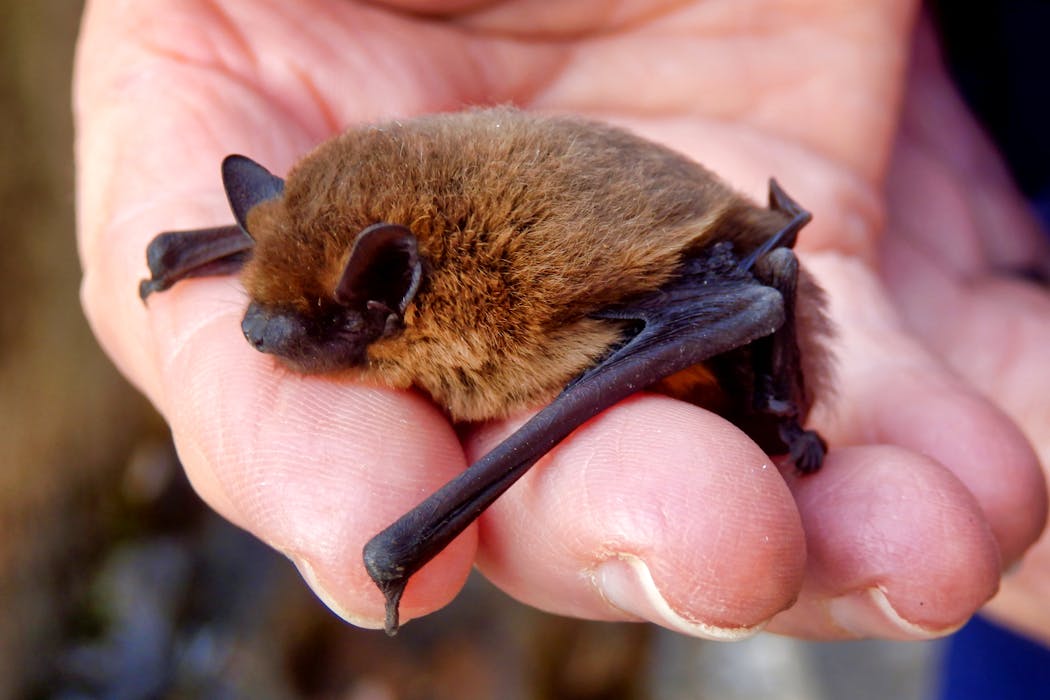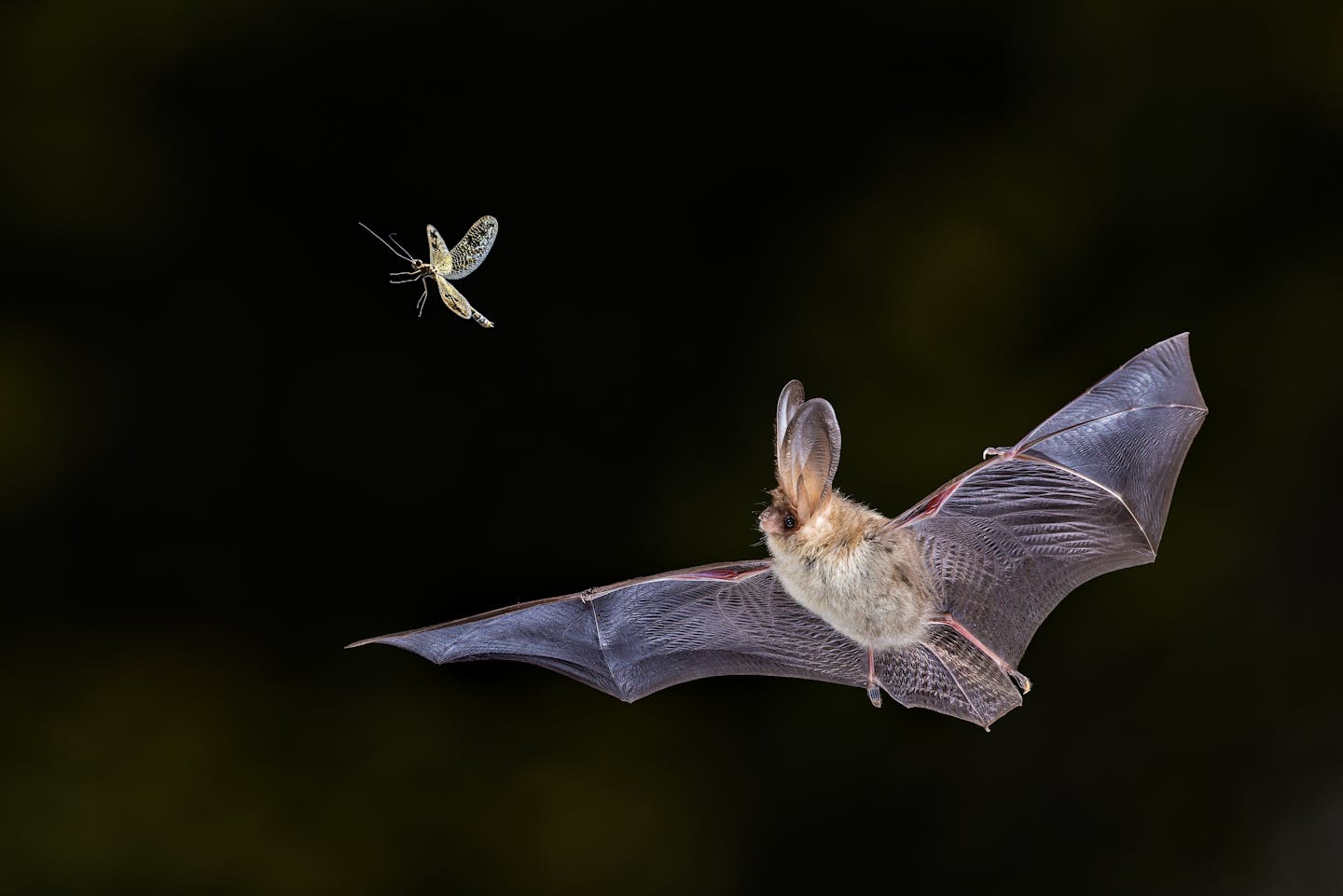
October is bats’ time in the spotlight, although they are mostly portrayed as spooky and creepy. The truth is, bats are more likely to help you than harm you.
Since I first saw a bat as an undergraduate student more than 20 years ago, I was captivated by these enigmatic and “weird” animals. The more I learn, the more I am amazed by their uniqueness and extraordinary adaptations. Here are seven fascinating facts that reveal the truth behind the many misunderstandings people still have about bats.
1. Fear of bats is not universal, it’s cultural
In western cultures, bats tend to be associated with witches, vampires, night and fear. Literature, films and Halloween imagery lean on these themes. In contrast, in many parts of the world bats are viewed positively. In Mesoamerica, bats were woven into sacred stories. The Maya revered Camazotz, the bat god of the underworld, associated with night, death and sacrifice. In the Popol Vuh (the sacred book of the K’iche’ Maya), Camazotz dwells in the House of Bats in Xibalba (the Maya underworld). Even today, the Popol Vuh remains alive in Maya culture.

In 1946, at Monte Albán, an important archaeological site in southern Mexico, archaeologists discovered the so-called mask of the bat God, a jade artefact dated to around 100BC-AD200. Researchers interpret it as evidence that bats were revered in cultures inhabiting these regions, symbolising fertility, death and the sacred world of caves and night.
Caves in Mesoamerica were often seen as portals to the underworld, and bats emerging from these dark spaces became associated with ancestors and divine forces. Rather than mere harbingers of fear, they embodied the powerful link between life, death and renewal. Today, caves and sinkholes are still regarded as sacred spaces, where rituals that blend ancient traditions with Catholic influences are performed.
2. Bats don’t attack humans
From Dracula to Morbius, bats in movies are often cast as villains or responsible for terrible disease outbreaks. The story of Dracula depicts bats as bloodsucking creatures from hell. But in reality, only three out of the 1,500 or so bat species feed on blood and they do not live in the UK or Europe. They prefer warmer climates and are found in the tropical areas of the Americas.
Even vampire bats target mostly livestock or other animals, not humans. Far more common are bats that feed on insects, fruit, nectar or even fish. These varied diets make bats essential to ecosystems.
3. Bats don’t deserve the rap they get for disease
Yes, bats can carry viruses and pathogens (as many animals do). But disease spillover to humans usually happens when bats are stressed by habitat loss, disturbance, or forced into closer contact with us or other animals. If blame is to be cast, it lies with us humans.
As for the COVID pandemic, it’s possible a person rather than an animal brought the virus to the live animal market in Wuhan.
4. Bats aren’t blind
Have you ever heard someone say that bats are blind? Maybe this idea comes from the fact that bats fly in unusual ways and are completely nocturnal in some regions. But bats have good vision supplemented by a sixth sense: echolocation. It helps them “see” the details of their environment.
Bat sonar navigation is fine-tuned to help them avoid obstacles such as trees and vegetation, and it helps them find food such as insects flying in the air or resting on plants. This system is comparable to some of our most advanced technology, such as the sonar submarines use to navigate in the darkness of the ocean.

5. Bats are givers, not takers
In the UK, bats eat insects – and a lot of them. This natural pest suppression helps reduce crop damage, control mosquito populations and relieve pressure on farmers to use chemical insecticides. But in tropical regions, bats do even more. They offer pollination, seed dispersal and vegetation regeneration services that are critical to ecosystems and agriculture.
In 2021 my colleagues and I conducted a study in Mexico showing that bats improve both yield and fruit quality of an important cactus fruit crop in Mexico. This was the first direct evidence of the economic value of bat pollination services, estimated at US$2,500 (£1,8060) per crop hectare.
We can taste their benefits here in the UK too. Do you drink tequila or mezcal? Well, bats are the main pollinators of that group of plants, called agaves.
6. Bats aren’t pests
You may have got the wrong idea from those depictions of bats as hellish creatures but these animals are closely entwined with their environment. Bats use weather cues to time key life cycles (hibernation, migration, reproduction). And these activities need to coincide with the availability of food. For example, insectivorous bats rely on insects emerging at predictable times. But as climate change makes spring warmer and shifts rainfall patterns, insects may appear earlier or in altered numbers.
These risks are especially relevant for insect eaters in temperate zones like the UK, where seasonality is strongly marked. A European study from 2025 of temperate bats warns that weather changes could push bat activity out of sync with prey availability.
We don’t yet know how severe the consequences will be. But if bats can’t feed on insects anymore, pest outbreaks and crop losses could rise.
7. Bats are lovers, not loners
Many bats are highly social and cooperative. Female vampire bats, for instance, are known to share blood meals with roost-mates that failed to feed that night, even when those bats are not related to them. They also spend large amounts of time social grooming, which not only helps with hygiene but also strengthens bonds between bats.
In other cave-roosting species, mothers form large nurseries and help care for each other’s young. They share grooming and protection duties and help with the thermoregulation of newborns.
Recent research on the spectral bat (Vampyrum spectrum), a carnivorous bat and one of the largest in the Americas (with a wingspan of about one metre), shows that these carnivores live in close family groups like parents and pups. Using cameras inside tree roosts, scientists observed adults bringing prey to their young, grooming, greeting each other, and even leaving and returning together, a level of cooperation rarely seen in carnivorous mammals.
These social bonds challenge the Hollywood image of bats as eerie loners of the night. Instead, bats live in rich communities built on cooperation and social bonding.
This article is republished from The Conversation, a nonprofit, independent news organization bringing you facts and trustworthy analysis to help you make sense of our complex world. It was written by: Veronica Zamora-Gutierrez, University of Southampton
Read more:
- Halloween, Avril Lavigne and the conspiracy theory that refuses to die
- In defence of bats: beautifully designed mammals that should be left in peace
- How does the world look through a spider’s eyes?
Veronica Zamora-Gutierrez receives funding from The Royal Society, British Cactus and Succulent Society.


 The Conversation
The Conversation
 Daily Voice
Daily Voice Deseret News
Deseret News People Top Story
People Top Story Associated Press US and World News Video
Associated Press US and World News Video KLKN-TV Lancaster County
KLKN-TV Lancaster County Timeout Chicago
Timeout Chicago WTOC 11
WTOC 11 WWSB
WWSB KKTV 11 News
KKTV 11 News Raw Story
Raw Story